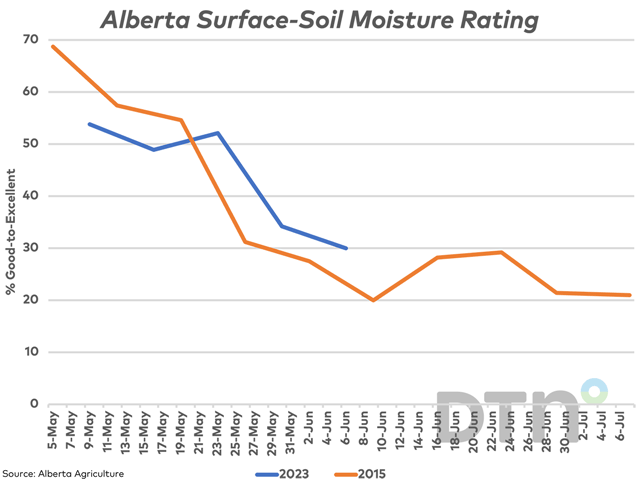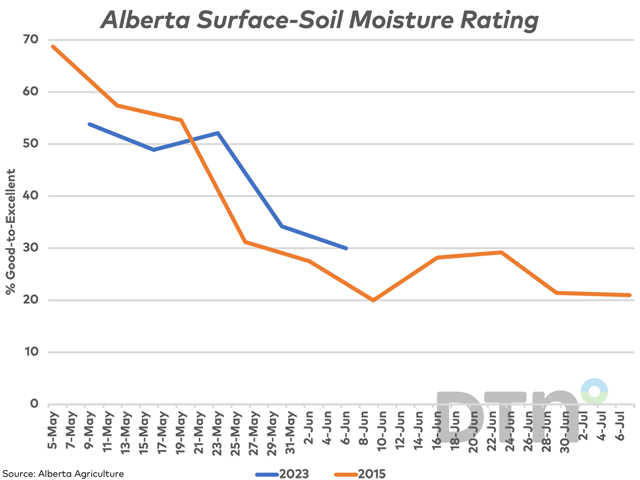Canada Markets
Growing Drought in Alberta Failing to Sway Traders
The Canadian Drought Monitor as of May 31 was released to show developing D3 or Extreme Drought in Alberta. This is the first time we have seen this shown on agricultural land on this chart since small pockets were scattered across the central and north-eastern areas of the province on the chart shown as of Nov. 30.
The Drought Montor for the Prairie Region as of May 31 estimates 79% of the Prairie Region ranged from abnormally dry (D0) to moderate to extreme drought (D1-D3), which includes 82% of the prairie agricultural land. This is up from the 65% of the Prairie Region and 79% of the agricultural land that was affected by drought at the end of April 30. As well, the area viewed as Severe to Extreme Drought in Alberta increased from 4% to 9% during the past month.
The Alberta government views the affected area between Calgary and Lethbridge to have received very little precipitation from April 1 to June 6, the largest area facing difficult conditions with the amount of precipitation received to take place less than once in 50 years.
P[L1] D[0x0] M[300x250] OOP[F] ADUNIT[] T[]
As seen on the attached chart, the current good-to-excellent rating for surface soil moisture has fallen to 30% good-to-excellent (blue line) for the province as of June, with a reported low of 22.6% G/E for the Southern Region. While southern Alberta producers are on record indicating the province has never been this dry this early, we look back to 2015 data to a year when these ratings show similar findings. In the week of June 7, 2022, this good-to excellent rating was shown at 20% G/E for the province, which ranged as low as 2.1% G/E surface soil moisture or the Northwest Region of the province.
The attached chart shows the change in this percentage shown over time.
While it is too early to jump to conclusions, the province's barley yield in 2015 was 1.8% above the previous five-year average, while the canola yield was 7.1% above average. At the same time yields for durum fell by 33.9% from the five-year average, the dry pea yield fell 29.6%, the oat yield fell by 29.6% and the spring wheat yield fell by 8.1%.
Today's DTN forecast points to a system moving through Alberta this week with widespread rainfall in the forecast.
Cliff Jamieson can be reached at cliff.jamieson@dtn.com
Follow him on Twitter @Cliff Jamieson
(c) Copyright 2023 DTN, LLC. All rights reserved.






Comments
To comment, please Log In or Join our Community .